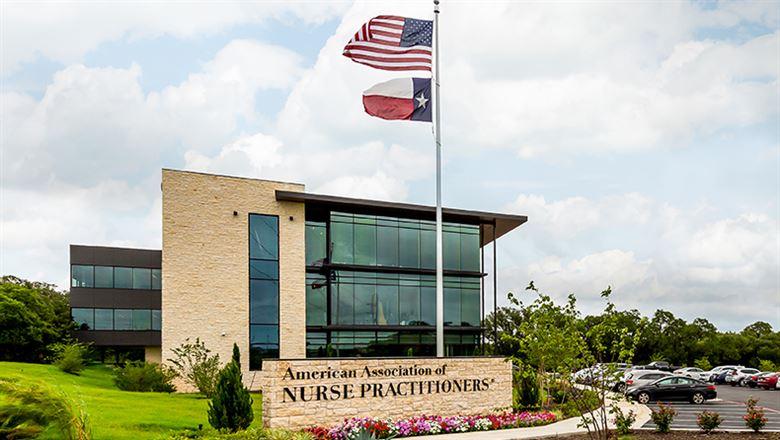David Hebert
David Hebert is the CEO of the American Association of Nurse Practitioners in Austin, Texas.

The American Association of Nurse Practitioners’ membership and staff grew rapidly, but its office building did not. AANP’s CEO shares what the group prioritized while building its new headquarters.
As an association grows larger and the needs of its membership and staff evolve, its leaders find themselves facing a daunting choice: is it better to lease larger space or take the leap to design, construct, and own an association headquarters building?
As CEO of the American Association of Nurse Practitioners, based in Austin, Texas, I faced that dilemma. With unprecedented growth in the nurse practitioner (NP) profession leading to a corresponding increase in membership and staff needed to support our mission, AANP was rapidly outgrowing its existing office space in 2015.
We considered three options: moving to larger space and continuing to lease, purchasing an existing building, or constructing our own. Leasing had always been the most convenient choice for us, but leased space involves fluctuating costs in future years with contract renewals. We also recognized that residing in an existing building—leased or owned –isn’t always ideal, particularly if the space didn’t fit our needs.
Another consideration for us was how to pay for new construction. Experts say an organization should have healthy revenue projections for at least five years, preferably longer, if they want to build. There are a number of sources commonly used to pay for association real-estate development projects, including organization cash (or other liquid assets), a capital fundraising campaign, foundation grants, and loans.
Because AANP has a healthy revenue stream and a growing membership, and the real estate market in Austin shows signs of strong growth in future years, it made sense to invest in a new building that we could design to suit our needs. We believed it would help us realize net asset growth, lower our operating budget and stabilize it for years to come, and provide us with nondues revenue through space that we could lease to other businesses.
After the AANP Board of Directors approved moving forward with new construction, we selected and purchased a land site in early 2017. We broke ground in early 2018 and began the final stages of our relocation in June 2019. We are very pleased with the end result and expect our new headquarters to reap significant benefits in the years to come. If you are planning to build as well, our experience taught us to prioritize the following four areas:
We believed it would help us realize net asset growth, lower our operating budget and stabilize it for years to come, and provide us with nondues revenue through space that we could lease to other businesses.
Understand future growth needs. When planning a new headquarters, factor in projected growth in membership and the related increase in professional staff needed to support members. It is also important that any space be in a central location within reasonable proximity of its metropolitan area and be able to provide for future specialized needs as your organization grows and adapts. In consultation with our commercial broker, architects, and construction company, we determined the location and size of the new building based on their expertise and our approved budget.
Focus design on members and mission. With AANP representing more than 270,000 NPs nationwide, our top priority was ensuring our headquarters was designed with our membership’s needs in mind. With large meeting spaces, reception areas, and more offices within a more centrally located building in Austin, we’ve created a highly productive hub with events for our membership, leadership, and association staff alike. We’ve also incorporated legacy features, like a dedication-brick pathway and an honor wall that prominently recognizes members for their support for AANP’s mission to increase access to health care.
Create additional revenue streams. The real estate market of each metropolitan area is unique, which will be a key part of your planning process. Austin showed strong signs of sustained growth. Not only did this factor into our decision to build and help us to select a location, but it also created an opportunity to diversify our income stream. We added additional office space that other community businesses can lease in the short term, which will generate nondues revenue for the association. Further, we expect to benefit from strong appreciation in market value.
Generate financial stability. Constructing a new headquarters can help create long-term stability for the association, even after operating costs and interest on financing debt have been factored in. Not only is the organization free from the frustrations of leasing office space and fluctuations in future lease expenditures, but a new headquarters will also accumulate equity over time.
AANP’s experience in building our new headquarters has been rewarding. It wasn’t without careful planning and unforeseen challenges, but designing, constructing, owning, and operating an association headquarters can have significant positive impacts on your organization’s growth strategy, as well as its balance sheet.